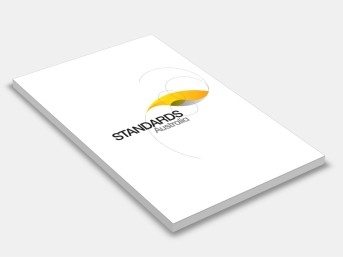AS/NZS 3017:2022 Electrical installations - Verification by inspection and testing
Standards Australia/Standards New Zealand
Supersedes: AS/NZS 3017:2007 Electrical installations - Verification guidelines
Draft Designation: DR AS/NZS 3017:2021This Standard was prepared by the joint Standards Australia/Standards New Zealand Committee EL- 001, Wiring Rules, to supersede AS/NZS 3017:2007 from the date of publication.
This Standard aims to provide people who carry out inspections and tests of an electrical installation with some methods of verifying that the electrical installation complies with the safety requirements for the prevention of fire and the protection of persons and livestock from electric shock.
AS/NZS 3017 may be applied through legislative requirements made in each State and Territory of Australia and in New Zealand.
AS/NZS 3000, Electrical installations (known as the Australian/New Zealand Wiring Rules), requires electrical installations to be inspected and tested before being placed in service. The inspection and test methods in this Standard are provided as a means for satisfying these requirements.
This Standard has been revised to align with AS/NZS 3000:2018, and to include the following:
(a) Additional tests for measurement of the resistance of the earth electrode and measurement of touch voltage.
(b) Tests of the integrity of incoming neutral.
The major changes in this edition are as follows:
(i) Increased guidance on selection and checking of test equipment.
(ii) Most figures illustrating test procedures amended for increased clarity.
(iii) Figures amended to reflect increasing use of residual current devices (RCDs).
(iv) Test for de-energized added, to be carried out before all other testing.
(v) Tests for polarity, phase rotation and correct circuit connections combined, because they are interrelated.
(vi) Testing for correct installation and functioning of RCDs amended.
This Standard is accompanied by additional data in a ZIP file. The ZIP file contains editable PDF forms. The ZIP file may be obtained on purchase of the Standard in any format.
The terms “normative” and “informative” are used in Standards to define the application of the appendices to which they apply. A “normative” appendix is an integral part of a Standard, whereas an “informative” appendix is only for information and guidance.
Originated as AS/NZS 3017:1996. Previous edition 2007. Fourth edition 2022.
Application of typefaces:
Four different typefaces are used in this Standard. Each of these has a specific purpose as follows:Normal print indicates requirements that form the main part of a clause. It also indicates deemed to comply methods that satisfy the requirements. Normal print is used in the Appendices to present informative material for guidance only.
Italic print indicates exceptions or variations to requirements. Exceptions generally give specific examples where the requirements do not apply or where they are varied for certain applications. They may contain requirements. Examples are also presented in italic text.
Reduced normal print indicates Notes which give explanations and advice. They are preceded by “NOTE” in the manner used in previous editions.
It is important not to read text in any single typeface without consulting the preceding or following paragraphs, which may contain additional or modifying requirements.
The term “deemed to comply” means that a requirement can be met by following a specified Standard or method.
Bold print indicates SAFETY WARNINGS.
Deemed to comply:
So, where an installation is carried out in accordance with the specified Standard or method, within the text of this Standard, the installation is “deemed to comply” with the requirements of this Standard.
Conformance to a deemed to comply Standard may exceed the minimum requirements of this Standard.
Statements expressed in mandatory terms in notes to tables and figures are deemed to be requirements of this Standard. Notes to text are informative and give explanations or advice. They do not form a mandatory part of this Standard.
Notes:
Where reference to another clause has been made, such reference, unless otherwise stated, includes all appropriate subclauses and paragraphs of the clause or portion thereof referred to.
This Standard is not intended to discourage invention or to exclude materials, equipment and methods that may be developed. Revisions will be made from time to time in view of such developments and Amendments to this edition will be made where essential.
Scope:
This Standard sets out some of the common inspection and test methods required to verify that a low voltage electrical installation, or part installation, complies with safety requirements.
This Standard illustrates testing procedures for an electrical installation connected to a Multiple Earth Neutral (MEN) (TN-C-S) system of earthing. The equipment and methods —
(a) are not exclusive and other equipment and methods may be used; provided they give equally valid results; and
(b) may be applied to types of low voltage installations other than MEN (TN-C-S); and
(c) may be applied to work that affects only part of an installation, e.g. alterations or repairs.
Although verification of compliance refers to the completed work undertaken, it is reasonable to expect that the inspection and test methods set out in this Standard may be applied during the design, selection and installation phases of the work as a matter of sound practice. Records of the on-going inspection and testing would contribute to verification of the completed work.
This Standard describes alternate test methods for electrical installations that are either energized or de-energized. The user of this Standard is to determine the appropriate test methods.
Contents:
Introduction
Section 1: Scope and General
Section 2: Test Equipment
Section 3: Visual Inspection
Section 4: Testing Installations
Section 5: Installation Test Records
Appendix A: Additional Information For Selecting And Using Test Equipment
Appendix B: Installation Test Record Forms
Wiring Rules.
EL-001
Australian Energy Council; Australian Industry Group; Communications, Electrical and Plumbing Union - Electrical Division; Consumers Federation of Australia; Electrical Regulatory Authorities Council; Electrical Safety New Zealand; Electrical Workers Registration Board; ElectroComms and Energy Utilities Industry Skills Council; Energy Networks Australia; Engineering New Zealand; Engineers Australia; Institute of Electrical Inspectors; Master Electricians Australia; Master Electricians NZ; National Electrical and Communications Association; National Electrical Switchboard Manufacturers Association; The Manufacturers Network; WorkSafe New Zealand.
